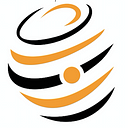Top Cloud Security Risks in 2023 & How to Tackle Them
Cloud computing has revolutionized the way businesses operate, providing scalable and cost-effective computing resources. However, with the increase in the adoption of cloud technology, the risk of data breaches and cyber-attacks have become an increasingly pressing concern for organizations of all sizes.
We will discuss the top 10 cloud security risks for 2023 and how organizations can mitigate them.
1. Data Breaches:
A data breach occurs when sensitive information, such as financial data, personal identification information, or confidential business information, is accessed or stolen by unauthorized individuals. This type of security incident can have serious consequences for organizations, including damage to reputation, financial losses, and loss of customer trust.
For example, in 2019, Capital One, a major financial services company, suffered a data breach that impacted 100 million customers. During the breach, the personal information of these customers, including names, addresses, credit scores, and bank account numbers, was accessed and potentially stolen by unauthorized individuals. This data breach caused significant damage to Capital One’s reputation and resulted in financial losses due to the cost of responding to the breach and potential legal repercussions.
These types of data breaches are becoming increasingly common, and organizations must take steps to protect their sensitive information and prevent unauthorized access. This includes implementing robust security measures, regularly assessing their systems for vulnerabilities, and providing employee training on security best practices.
Solution:
Microsoft Azure Information Protection and Microsoft Azure Active Directory are two Microsoft services that help organizations protect against data breaches. Azure Information Protection allows organizations to classify and protect sensitive information with encryption and access controls, while Azure Active Directory provides identity and access management to control and monitor access to sensitive data. These tools, used together, provide a comprehensive solution for preventing unauthorized access to sensitive information, reducing the risk of a data breach and improving an organization’s security posture.
2. Malware and Ransomware Attacks:
Malware and ransomware attacks are malicious software that can compromise cloud systems, causing considerable damage and disruption. A well-known example is the 2019 ransomware attack on the city of Baltimore that resulted in a loss of over $18 million. To prevent such attacks, organizations should implement robust security measures and provide employee training, as well as have a disaster recovery plan in place. By taking these steps, organizations can reduce the risk of a malware or ransomware attack and minimize the damage caused by such incidents.
Solution:
Microsoft offers several solutions to help organizations protect against ransomware attacks, including Windows Defender Advanced Threat Protection (ATP), which provides real-time protection against ransomware and other advanced threats. Additionally, Microsoft’s OneDrive and SharePoint services allow organizations to store their data in the cloud, where it can be backed up and easily recovered in the event of a ransomware attack.
3. Account Hijacking:
Account hijacking refers to unauthorized access to cloud accounts using stolen credentials, such as login and password information. This type of attack can have profound consequences for organizations, as it can lead to data theft, economic loss, and damage to reputation.
In a typical account hijacking scenario, an attacker gains access to an individual’s login and password information, either through phishing frauds, malware attacks, or data breaches. The attacker then uses this information to gain access to the individual’s cloud account, potentially accessing sensitive information, such as financial data or personal identification information. In some cases, the attacker may also be able to modify or delete data, causing significant disruption to an organization’s operations.
To prevent account hijacking, organizations should implement strong authentication practices, such as multi-factor authentication, to ensure that only authorized individuals
Solution:
Microsoft Azure provides several security features to help fight account hijacking, including:
Read on to find more at https://www.intelegain.com.
